
Are you struggling to grow plants in your garden due to limited soil depth? By now, you have noticed how tricky shallow soil can be. But what can you do if that’s the only soil you have? Surely, there must be some workaround?
Fear not, dear reader. If you’re struggling to grow a particular specimen, you’d be delighted to learn there is a whole plethora of plants for shallow soil that actually love these conditions. In this post you will learn what they are and how to care for them.
Before that, however, let’s answer one simple question…
Table of Contents
What makes shallow soil challenging for growing plants?
Shallow soil is soil where roots cannot grow far down. It may be just a few centimetres deep before the plant roots hit rock, clay, or rubble. In the UK, shallow soil often appears on rocky ground, in gardens with compacted clay layers, or on urban plots filled with rubble. It also appears in raised beds with a limited amount of soil. These conditions mean there is only a thin layer of soil for plants to take hold in.
You usually face several challenges with this kind of soil. The first is that roots have limited space. This can stunt plant growth and make the plants unstable. Water does not hold well either. Sometimes it drains too quickly, while other times it pools on the surface. If that wasn’t bad enough, nutrients are often scarce. This makes it harder for plants to stay healthy, even if they manage to take hold.
Sounds like the perfect mix for a barren garden, but still, there is hope.
What to plant in shallow soil?
Here are several plants for shallow soil that do well in the UK climate.
Thyme
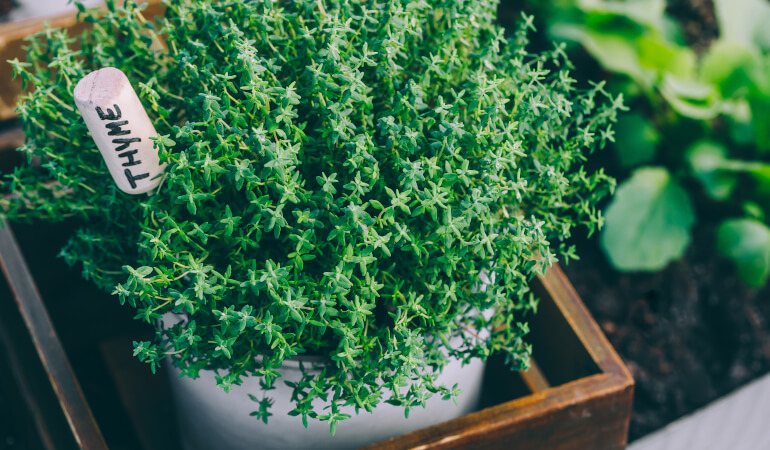
Its roots are only a few centimetres deep, and it thrives in dry ground. The perfect specimen for shallow soil. You can put Thyme in raised beds, rockeries, or even cracks in paving stones.
Plant in full sun with free-draining soil. Water sparingly once it has established itself. Mind you, too much moisture causes rot.
Trim after flowering to keep the plant neat and to encourage fresh growth. That’s it.
Sedum
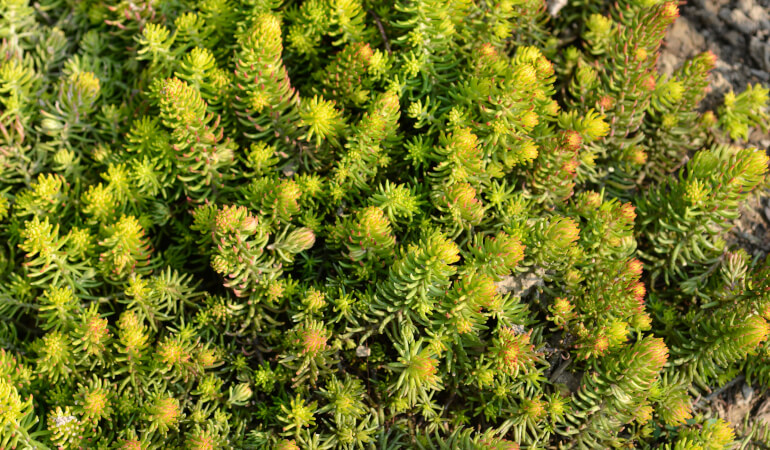
Sedum, is one of the best plants for very shallow soil in UK gardens. Also known as stonecrop, its fleshy leaves store water, so it tolerates drought and thin soil.
Plant Sedum on rooftops, dry borders, or gravel gardens. It prefers full sun and only needs you to water it lightly in extreme heat. And extreme heat is something we never get in the UK.
Cut back old stems in spring to keep it tidy and encourage new shoots. That’s all you need to do with Sedum.
Lavender

Lavender is well-suited to shallow, sandy, or stony soil. Its roots do not grow very deep and it loves sunny, well-drained spots.
Plant lavender in borders, raised beds, or containers near patios and paths. There, the scent can be enjoyed the most. Water young plants until they settle, then water only during long dry spells
Prune lightly after flowering to keep its shape.
Ajuga
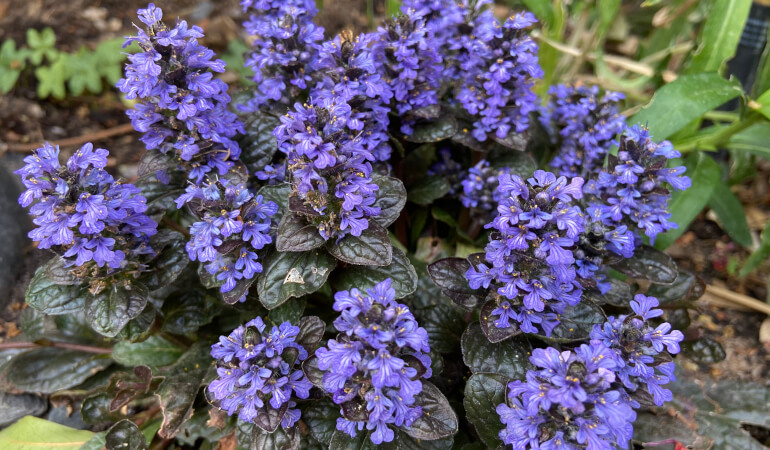
Ajuga, also know as Bugleweed, is a low-growing groundcover. Why is it one of the best plants for shallow soil and shade? It spreads quickly and covers bare patches under trees or along shaded borders.
Plant in moist but not waterlogged soil. Water regularly in dry weather and cut back old leaves to encourage fresh growth.
Its blue spring flowers attract bees and brighten up shady areas, so that’s a great bonus.
Pansies
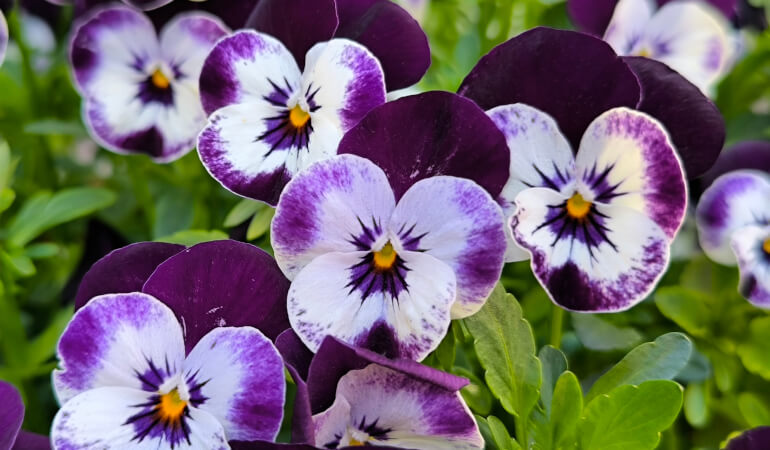
Pansies are colourful flowers for shallow soil. They’re also perfect for containers, window boxes, or thin garden beds because they look too good not to show.
Plant in sunny or partly shaded spots to get the best blooms. They cope well with shallow ground as long as they are watered often. Deadhead faded flowers to keep them blooming longer and feed with a balanced fertiliser every few weeks.
Heather
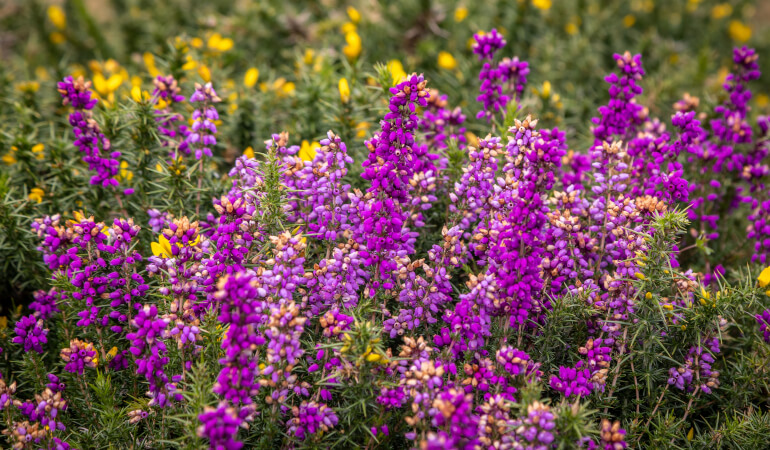
Heather is a classic choice for shallow, acidic soil. It adds year-round colour to rockeries, slopes, and shallow beds.
Plant in full sun or light shade with well-drained soil. Water it well when it’s young. After it is established, let it fend for itself. Don’t worry, it will be fine.
Trim lightly after flowering to stop it from becoming woody and you’re good to go.
Creeping phlox

Creeping phlox is one of the most popular flowers for shallow ground. It forms a dense mat of foliage and explodes with pink, purple, or white flowers in spring. Perfect for rockeries, edges of paths, or dry slopes.
Plant in full sun with well-drained soil. Water during dry spells, and shear back after flowering to keep it compact.
Saxifraga

Saxifraga, also known as Rockfoil, is an alpine plant that thrives in very thin soil and rocky crevices. Its shallow roots cling to stony ground, so it’s ideal for walls, rock gardens, or gravel beds.
Plant in partial shade for best results, especially in hotter areas. Water moderately, and divide clumps every few years to refresh growth. Its star-shaped flowers will add charm in spring and early summer.
By the way, mint and Sedum have the shallowest roots compared to the rest. Their roots usually go 5-20 cm deep, much less than most shrubs and perennials that often go 30-60 cm or deeper. Their roots also spread sideways near the surface rather than going deep. This makes them ideal for very shallow soil or rockeries.
You’ve likely noticed that none of the mentioned plants are Hydrangeas, and that’s for a reason. Hydrangeas prefer soil that allows their roots to spread, so shallow soil can be a problem. They may survive, but flowering and growth can be reduced. If you still want to plant them in shallow soil, use a raised bed or add plenty of compost to give roots more depth and nutrients. Also, keep the soil consistently moist.
For romantic people who love roses, you’re in for bad news. Roses generally need deeper soil for their roots to develop properly. In shallow soil, they may struggle to grow strong or flower well. You can still try to grow roses indoors, in raised beds or large containers. Add a rich, well-drained soil to give them enough room and nutrients.
Tips for successful planting
Here are a few more tips on what to do after you plant those plants in your shallow soil.
- Mulch regularly – Apply a layer of bark chips, compost, or straw. It doesn’t matter which; any will do. It helps keep the soil moist and adds nutrients as it breaks down. Mulch also protects roots from temperature changes and reduces weed growth. Weeds compete for the limited nutrients in the soil, and when that soil is shallow, the nutrients are even more scarce. So, with mulch, you will keep the unwanted plants at bay.
- Choose dwarf or compact varieties – Many plants have dwarf or compact versions of themselves. These varieties are better suited to shallow soil because they do not require deep roots to grow strong and healthy. Look for compact herbs, shrubs, and flowers labelled for small spaces. Your garden will be full of cuteness.
- Consider raised beds and containers – Raised beds are ideal for areas with very shallow or poor soil. You can fill them with good-quality soil and compost, giving plants enough depth to grow properly. Containers work well too, and they can be placed on patios, rooftops, or hard surfaces where natural soil is limited.
- Use deep pots for plants that need more root space – If you want tomatoes or Hydrangeas, you won’t get them in shallow soil. Instead, plant them in deep containers. Deep containers will allow roots to grow freely. Not only that, but you will have more control over soil quality and moisture. Large pots also make it easier to move plants to sunnier or sheltered spots. That’s definitely a huge advantage, in this case.
Time for new blooms? Book an expert to plant and care for your flower beds.
Enter your postcode to view our rates and availability in your area.
For questions about the services we offer visit our main site
Takeaways
- Shallow soil is not great, but you can still plant in it.
- Try plants such as Thyme, Sedum, Creeping phlox or Lavender. Also, try dwarf versions of those said plants.
- Roses and Hydrangeas do not like shallow soil, but you can grow them in raised beds or large containers.
- Herbs like Thyme and groundcovers such as Sedum and Ajuga are among the best plants for shallow soil.



